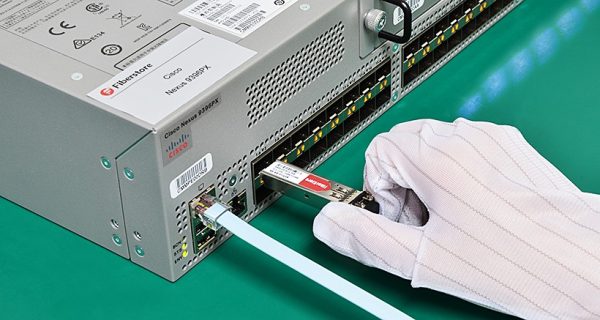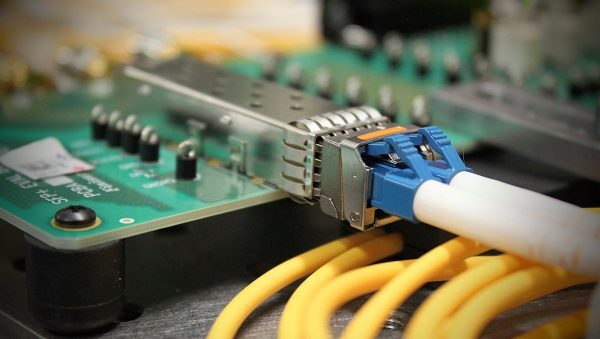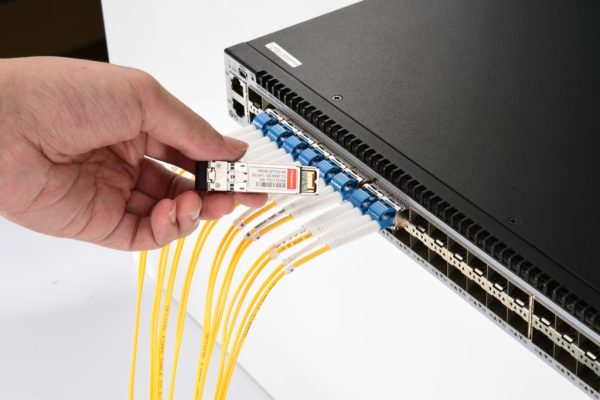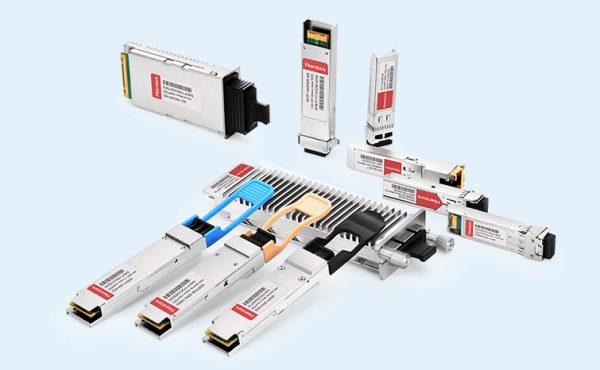The optical module, also known as the optical transceiver in one module, is used to complete the photoelectric / electro-optical conversion function. It is mainly composed of an optical transmitting unit, optical receiving unit, digital signal processing unit, control unit, power supply unit, and passive optical devices. The typical functional block diagram is shown in Figure 2 (a).
The optical transmitting end processes the electrical signal of a certain rate transmitted from the equipment side by the digital signal processing unit and the driver, and drives the laser to emit the modulated optical signal of the corresponding rate for large capacity, low loss, and long-distance optical fiber transmission; The modulated optical signal at the optical receiving end is converted into the electrical signal of the corresponding rate by the detector, and then output by the electrical interface after amplification and recovery processing.
Optical modules can be classified in many ways, including ≤ 1/2.5/10/25/50/100/200/400/800gb/s according to transmission rate, tens of meters / 100m/ 500m/2km/10km/40km/80km/ hundreds of kilometers/thousands of kilometers according to the transmission distance, intensity modulation (nrz/pam4), phase modulation (dp-qpsk/nqam) according to modulation format, gray light and color light according to whether wavelength division multiplexing (WDM) is supported, and dual fiber bidirectional Single fiber bidirectional (bidi) can be divided into commercial-grade (0~+70 ℃), industrial-grade (-40~+85 ℃) and extended grade (-20~+85 ℃) according to the working temperature. It can be divided into pluggable type (sfp+/sfp28/sfp56/qsfp28/cfp2/qsfp-dd/osfp, etc.) and non pluggable type (168 pin / 320 pin, etc.) according to the packaging type.
Development of Electrical Interface

There are many application scenarios and manufacturers of optical modules. In order to facilitate plug-and-play and interconnection in servers, switching and routing equipment, and communication system equipment, domestic and foreign standardization organizations have conducted comprehensive standard research on the electrical interface, optical interface, and packaging form of optical modules.
The international standardization of the electrical interface is mainly promoted by the optical Internet Forum (OIF) and the Institute of Electrical and Electronics Engineers (IEEE) 802.3. As the upper layer business applications have a rapid growth in the speed of optical modules, which exceeds the bandwidth capacity of optoelectronic chip devices, the electrical interface mainly realizes the speed improvement through multi-channel multiplexing and high-order modulation. The single-channel baud rate has gradually evolved from 10.3125gbd in the early stage to 53.125gbd and higher.
Based on the same baud rate, the pam4 code type can double the rate compared with the NRZ code type. For example, based on the 26.5625gbd NRZ modulation code type, 2-channel multiplexing can realize 50gb/s electrical interface (50gaui-2). Based on 26.5625gbd pam4 modulation code type, one channel can realize 50gb/s electrical interface (50gaui-1), and 8-channel multiplexing can realize 400gb/s electrical interface (400gaui-8). At present, OIF and IEEE 802.3ck are researching the electrical interface with a higher baud rate of 112/224gbd to promote the increase of optical module rate and the reduction of channel number.
Development of Form-factor

Because optical signals can carry modulation information through intensity, phase and polarization, at the same time, optical signals of different wavelengths can be transmitted in the same fiber without interference with each other, the optical interface can achieve rate improvement through multiple fiber multiplexing, multiple wavelength multiplexing, and higher-order intensity and phase modulation.
In addition, in order to balance the cost and performance of optical modules, optical interfaces also involve different transmission distances. International standardization is mainly jointly formulated by ITU-T, IEEE 802.3, OIF, and other standard organizations, as well as 4wdm, 100g lambda, 800g pluggable MSA, IPEC, open zr+, and other multi-source protocol (MSA) organizations initiated by manufacturers
Optical modules have a variety of packaging forms, which can adapt to different sizes, power consumption, and speed requirements. Currently, the optical module is mainly packaged in pluggable form, with the advantages of small size and low power consumption. The technical specifications are developed by MSA such as CFP, SFF, QSFP-DD, and OSFP; Some long-distance high-speed coherent fields pursue high performance and still adopt the form of non-pluggable.
With the increasingly severe challenges of switching capacity, port density, and power consumption, optoelectronic co-packaging (CPO) has become an important development direction in the future. OIF, CPO JDF, Cobo, and the International Optoelectronic Commission (IPEC) have carried out research on CPO standards.
Common form factor introduction
SFP: a small pluggable optical module, the current maximum data rate can reach 155 M to 10 G, usually connected with LC jumpers. SFP optical modules also include 100M SFP, Gigabit SFP, BIDI SFP, CWDM SFP, and DWDMSFP. Each optical module has undergone strict compatibility.
SFP+: The shape of the SFP+ optical module is the same as that of the SFP optical module, but the supported rate can reach 10 G, which is often used for medium and short-distance transmission. Compared with the XFP optical module, there is no CDR module inside the SFP+, so the size and power consumption of the SFP+ are smaller than that of the XFP.
QSFP+: QSFP+ optical module (click here) is a four-channel small and hot-swappable optical module, which supports connection with MPO and LC fiber jumpers, and is larger than SFP+ optical module.
Main parameters of Optical module

Transmission Rate
(1) The number of bits (bits) of data transmitted per second, in bps.
(2) There are 7 commonly used ones: 155 Mbps, 1.25 Gbps, 2.5 Gbps, 10 Gbps, 25 Gbps, 40 Gbps, 100 Gbps, etc.
Transmission Distance
(1) The distance that an optical signal can be directly transmitted without repeater amplification, in kilometers (km).
(2) Optical modules generally have the following specifications: multi-mode 550 m, single-mode 20 km, 40 km, 80 km, and 120 km, etc.
(3) There are three main types of wavelengths of light:
①850 nm (MM, multi-mode, low cost but short transmission distance, generally only 500 m can be transmitted);
②1310 nm (SM, single-mode, large loss but small dispersion during transmission, generally used for transmission within 40 km);
③1550 nm (SM, single-mode, small loss but large dispersion during transmission, generally used for long-distance transmission over 40 km. The farthest can be directly transmitted 120 km without relay)




